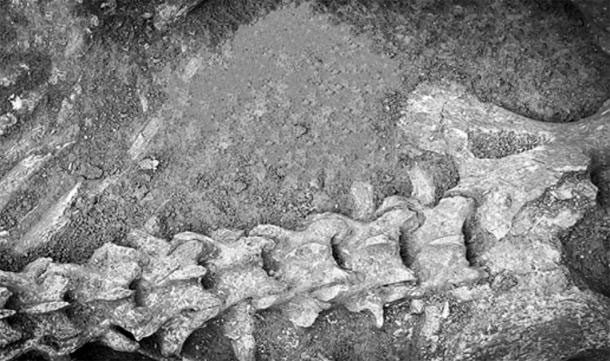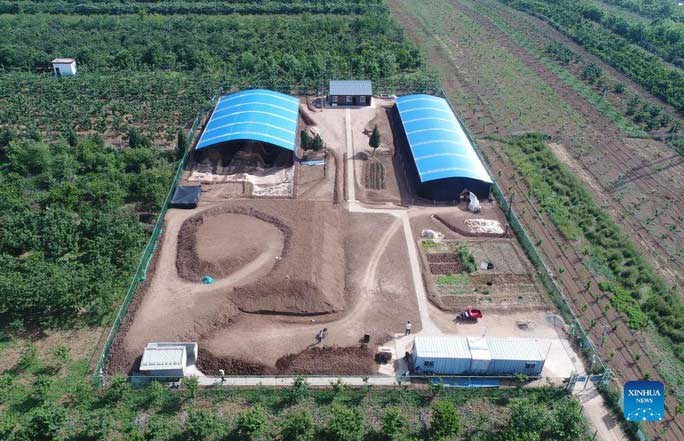Unusual remains of several large species have recently been discovered in the mausoleum complex of Emperor Wen of Han (202-157 BCE) near Xi’an, Shaanxi Province, China.
According to a research team led by the Chinese Academy of Archaeology, the most notable find is a giant, completely intact skeleton placed within a brick structure that faces directly towards the final resting place of Emperor Wen of Han.

The giant spine excavated from a brick structure facing the resting place of Emperor Wen of Han – (Photo: CHINESE ACADEMY OF ARCHAEOLOGY).
The website Ancient Origins quoted researcher Hu Songmei from the Shaanxi Academy of Archaeology, a member of the research team, stating that they compared these remains with modern species and identified it as a particularly rare Qinling panda.
The Qinling panda originates from the mountain range of the same name, which serves as a natural boundary between southern and northern China. This species is part of the giant panda group, geographically isolated leading to many morphological and genetic differences compared to the Sichuan giant panda.
Qinling pandas have brown and white fur rather than the typical black-and-white coloring of other panda species. Interestingly, a similar panda skeleton was also found in the mausoleum of Empress Dowager Bo, the mother of Emperor Wen of Han.
Historically, pandas were regarded as noble creatures, often offered as tribute to the royal family and foreign dignitaries. This may explain their special placement in royal tombs.
In addition to giant pandas, scientists also discovered the remains of several other rare species, including tigers, babirusas, water buffalo, antelope, goats, and Tibetan cattle… This suggests that it seems people were building a “paradise” in the afterlife for Emperor Wen of Han.

Common panda (left) and Qinling panda with brown and white fur – (Photo: GLOBAL TIMES).

Mausoleum complex of Emperor Wen of Han – (Photo: CCTV).
Researcher Wu Xianzhu from the Hubei Provincial Archaeological Research Institute noted that the presence of panda remains is still the most noteworthy, emphasizing the ancient connection between humans and this species.
Recent estimates suggest that there are only about 300-400 rare Qinling pandas left in the wild.





















































